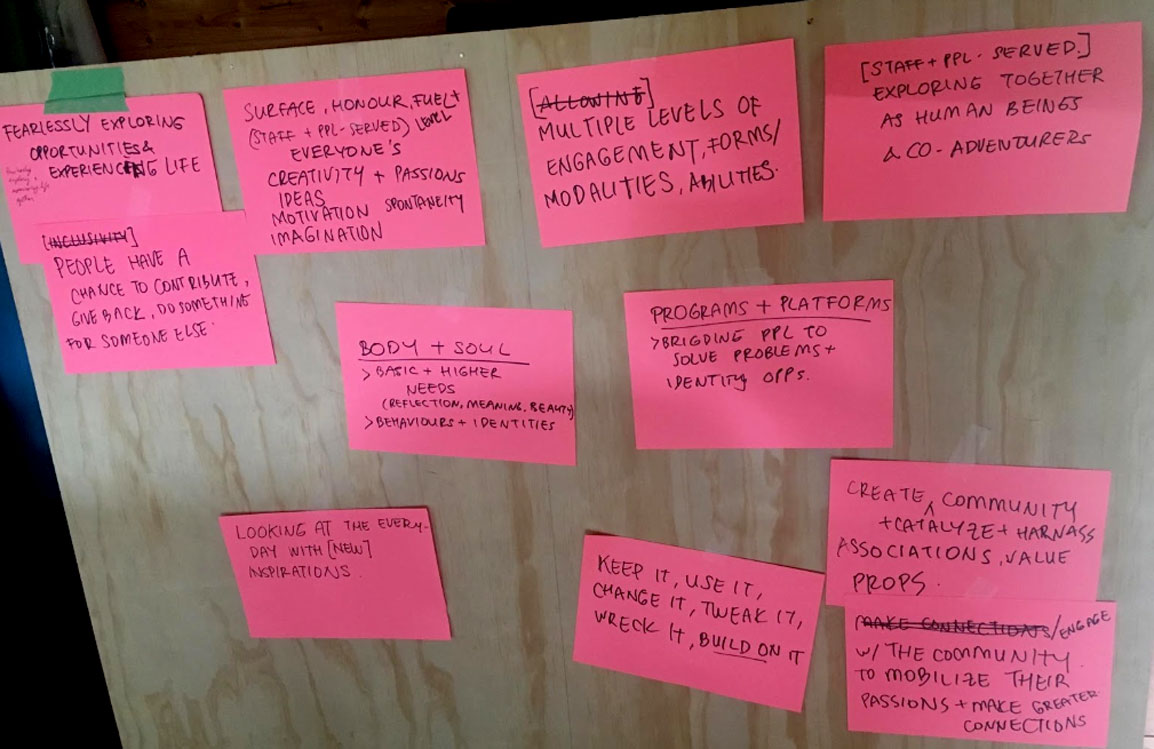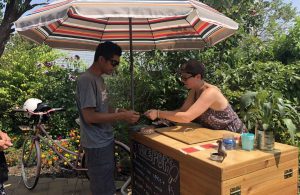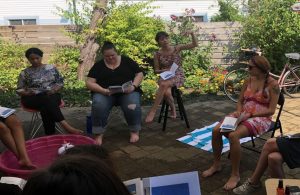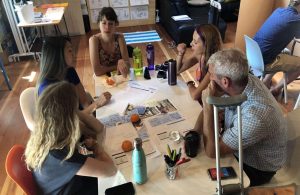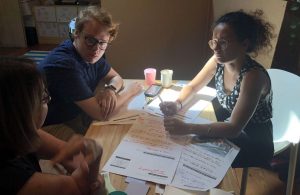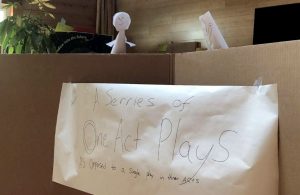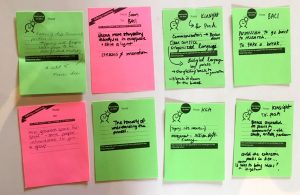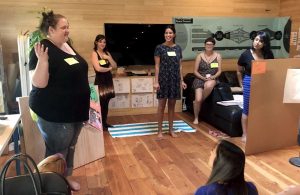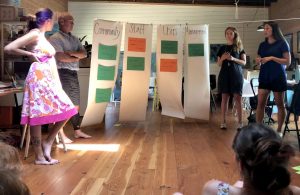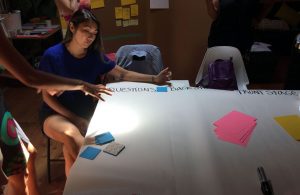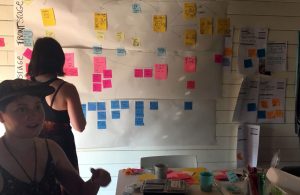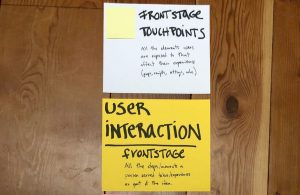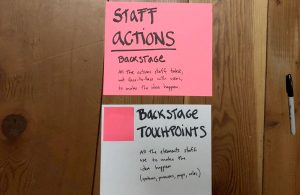Categories
Social services are often seen as ambiguous entities that are overwhelming and complicated to piece apart – and it certainly felt that way for me initially. As a business student and someone who is new to the world of design, it was interesting to see the differences between designing for impact vs. for-profit. How do you measure impact that isn’t tangible? What processes and systems need to be changed to enable grounded change?
I was also exposed to some of the challenges that occur when organizations move from best practices to next practices. How do you curate a culture of innovation when it is so counter to the existing culture within social services? How do you work within those systems and mobilize resources to break barriers from the inside-out? I quickly saw how codifying elements of the process can make for a more cohesive journey.
This was my first sprint as a new member of the InWithForward team. Working closely with the posAbilities crew gave me valuable insight into the processes behind creating grounded change.
Here’s how it all played out.
Curating the story
To kick off the day, we asked each crew to reflect on what they’d discovered through their research so far. These were the three questions they analyzed:
1. What happened and what did you learn?
2. Why is what you learned significant?
3. What needs to change?
The teams were then asked to share their insights from their research to the other crews in a compelling narrative – which took the shape of a play, a puppet show and a well-structured presentation. We definitely had a few actors and actresses in our midst!
Once the curtains had closed, the spectating teams drew from their own perspectives and experiences to borrow and gift ideas to the other teams. One of the crews mentioned how consensus initiatives and groupthink had hindered their ability to effectively facilitate. Another shared their challenges with redefining roles and breaking the barriers between staff and person-served. I was intrigued by how many parallels could be drawn between the teams and their triumphs and struggles.
From intention to principles
Our next activity was to really zero in on each team’s design principles – we wanted them to pack a punch. We use principles to inform the decision making that occurs during the design process. Needless to say: without strong principles, it is easy to lose sight of what matters most. It’s easy to get caught up in innovation for innovation’s sake.
With feet in the kitty pool, I worked closely with the posAbilities crew to brainstorm, hack, tweak and create the principles for their project. It was interesting to be a part of this codification process because, honestly, it was much tougher than I anticipated. I realized that sometimes, articulating big ideas into a few manageable numbers and codifying them with intentionality can be difficult. Nevertheless, the more we discussed, the clearer our ideas became.
A blueprint for grounding
Having generated journey maps in the previous sprint, it was time to view the projects through another lens. Our next exercise focused on creating a blueprint for each crew’s initiatives.
We use blueprints to understand the frontstage and backstage processes for an idea in development. They also help probe questions that need addressing in order for that idea to come to life. For example, before Meraki boxes are delivered the posAbilities crew must have: a catalogue of boxes, a Meraki Maestro to deliver the boxes and a sign-out book to keep track of inventory. Some questions that arose were : how frequently are we delivering the boxes? How does the Maestro transport the boxes? And, is the sign out sheet manual or digital?
Several sticky notes later, the roadmap was looking clearer. The crews were able to gain more insight into the systems and processes that needed to be solidified to enable their initiatives to come to life. This exercise showed me the importance of having a cohesive system that accounts for all perspectives when grounding. I saw how the principles were embodied throughout the blueprint and how they were informing the decisions the crews were making.
After a day of sharing, analyzing, codifying (and sweating), the path forward for each crew was looking clearer. The crew’s had a greater sense of which elements of their processes to focus on and strengthen.
What happened after the sprint?
The posAbilities team met the following week to continue working on their prototypes. Now that some of the processes had been codified, it was time to re-examine the prototypes to ensure that they were informed by the principles created during the sprint.
As we dove in, a crew member noticed that one of the prototypes was lacking the element of human/community connection – a key design principle for the posAbilities project. It was clear that the prototype needed a makeover. So, in the true spirit of hacking, tweaking and wrecking, we bid the existing idea farewell and moved on. We eventually developed a new and improved prototype – one that better aligned with the project’s design principles.
Seeing the ‘before vs after’ of the prototype really showed me the value of codifying a process. The codification of the design principles prompted the team to dive deeper into how their principles were being embodied. It was clear to see how having a set of explicit principles had helped guide the team in critiquing their existing prototypes.
